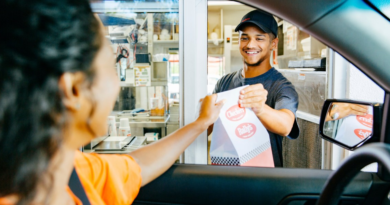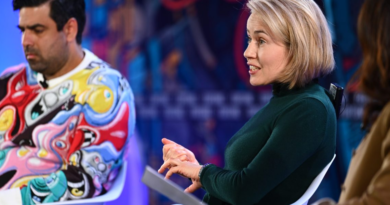'Toilet to tap': California approves using recycled wastewater for drinking to help solve frequent drought
When a toilet is flushed in California, the water can end up in a lot of places: An ice skating rink near Disneyland, ski slopes around Lake Tahoe, farmland in the Central Valley.
And — coming soon — kitchen faucets.
California regulators on Tuesday approved new rules to let water agencies recycle wastewater and put it right back into the pipes that carry drinking water to homes, schools and businesses.
It’s a big step for a state that has struggled for decades to secure reliable sources of drinking water for its more than 39 million residents. And it signals a shift in public opinion on a subject that as recently as two decades ago prompted backlash that scuttled similar projects.
Since then, California has been through multiple extreme droughts, including the most recent one that scientists say was the driest three-year period on record and left the state’s reservoirs at dangerously low levels.
“Water is so precious in California. It is important that we use it more than once,” said Jennifer West, managing director of WateReuse California, a group advocating for recycled water.
California has been using recycled wastewater for decades. The Ontario Reign minor league hockey team has used it to make ice for its rink in Southern California. Soda Springs Ski Resort near Lake Tahoe has used it to make snow. And farmers in the Central Valley, where much of the nation’s vegetables, fruits and nuts are grown, use it to water their crops.
But it hasn’t been used directly for drinking water. Orange County operates a large water purification system that recycles wastewater and then uses it to refill underground aquifers. The water mingles with the groundwater for months before being pumped up and used for drinking water again.
California’s new rules would let — but not require — water agencies take wastewater, treat it, and then put it right back into the drinking water system. California would be just the second state to allow this, following Colorado.
It’s taken regulators more than 10 years to develop these rules, a process that included multiple reviews by independent panels of scientists. A state law required the California Water Resources Control Board to approve these regulations by Dec. 31 — a deadline met with just days to spare.
The vote was heralded by some of the state’s biggest water agencies, which all have plans to build huge water recycling plants in the coming years. The Metropolitan Water District of Southern California, which serves 19 million people, aims to produce up to 150 million gallons (nearly 570 million liters) per day of both direct and indirect recycled water. A project in San Diego is aiming to account for nearly half of the city’s water by 2035.
Adel Hagekhalil, general manager of the Metropolitan Water District of Southern California, said the new rules “will enable water managers across the state to consider new projects that have not yet been contemplated.”
Water agencies will need public support to complete these projects — which means convincing customers that not only is recycled water safe to drink, but it’s not icky.
California’s new rules require the wastewater be treated for all pathogens and viruses, even if the pathogens and viruses aren’t in the wastewater. That’s different from regular water treatment rules, which only require treatment for known pathogens, said Darrin Polhemus, deputy director of the division of drinking water for the California Water Resources Control Board.
In fact, the treatment is so stringent it removes all of the minerals that make fresh drinking water taste good — meaning they have to be added back at the end of the process.
“It’s at the same drinking water quality, and probably better in many instances,” Polhemus said.
It’s expensive and time-consuming to build these treatment facilities, so Polhemus said it will only be an option for bigger, well-funded cities — at least initially.
In San Jose, local officials have opened the Silicon Valley Advanced Water Purification Center for public tours “so that people can see that this is a very high tech process that ensures the water is super clean,” said Kirsten Struve, assistant officer for the water supply division at the Santa Clara Valley Water District.
Right now, the agency uses the water for things like irrigating parks and playing fields. But they plan to use it for drinking water in the future.
“We live in California where the drought happens all the time. And with climate change, it will only get worse,” Struve said. “And this is a drought-resistant supply that we will need in the future to meet the demands of our communities.”
Joaquin Esquivel, chair of the Water Resources Control Board that approved the new rules on Tuesday, noted that most people are already drinking recycled water anyway. Most wastewater treatment plants put their treated water back into rivers and streams, which then flow down to the next town so they can drink it.
“Anyone out there taking drinking water downstream from a wastewater treatment plant discharge — which, I promise you, you’re all doing — is already drinking toilet to tap,” Esquivel said. “All water is recycled. What we have here are standards, science and — importantly — monitoring that allow us to have the faith that it is pure water.”




